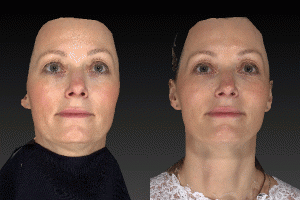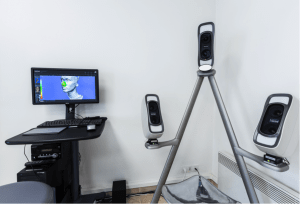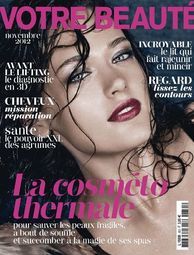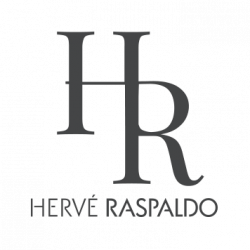Plastic surgery
3D simulation of plastic surgery
3D simulation in Geneva
Before any plastic surgery or any plastic treatment, we suggest you take a 3D photo of your face and, possibly, a 3-dimensional simulation, in our office in Geneva using our plastic surgery simulator.
This process is a plus and a real aid to the diagnosis and the project. It is also a possibility to approach the project differently and to study the project more precisely with the patient.
Our “Sculptor 3D” simulation software will allow you to appreciate and visualize the potential results of your beauty treatments and interventions, directly on your own 3-dimensional image. This surgery simulatorand this 3D simulation allows you to visualize yourself in all planes of space and from all angles. We also often talk about virtual plasticsurgery or a digital analysis of the patient’s face, but it is the same process.
Whether it is a rhinoplasty simulation, face analysis or any other treatment, the 3D simulation of plastic surgery allows you to understand better the areas of the face to be corrected and to propose the most adequate treatment, in harmony with your wishes, your request and the advice, experience and expertise of Doctor Raspaldo.
Opt for sound and very useful help that will facilitate exchanges between patient and plastic surgeon.
The hyper-realism of the 3D simulation of plastic surgery of Doctor Raspaldo


Some extracts from the article on the 3D simulation of the magazine “VOTRE BEAUTE”
November 2012 (by Anne-Marie Attali)

Exclusively for you…. Your photos in 3D
A technological innovation that provides your practitioner and yourself with the realistic visual data necessary for the development of a beauty treatment or surgery programme based on your body shape and as close as possible to your expectations.
The 3D Face Diagnosis
The concept called Revelation 3D® is based on an innovative technology for reconstruction and visualization of 3D images, explains Dr Hervé Raspaldo, Face and Necksurgeon. It represents for aesthetic medicine doctors and plastic surgeons a precious diagnostic and analysis tool, allowing personalized treatments and precise gestures, in perfect adequacy with the needs of each patient. Its use is very simple. We sit in front of a device with six cameras arranged in a Vshape (two on each side and two others in front). In a matter of seconds, six photos are taken, which will give two reconstruction images to select from (one in colour, the other in black and white). Resembling masks that would have the features of the patient, they are viewed on the practitioner’s computer, which with one click can rotate and orient them. The black and white image is particularly interesting. It shows the skin and soft deep tissue inequalities and lets us foresee the subcutaneous structures, as well as the reliefs and hollows of the face. This mapping helps the doctor to identify better the areas that need to be corrected and then to assess with deep accuracy a loss of cheek volume, the extent of dark circles or a lack of nasal cartilage.
PAULINE, 54 YEARS OLD, “THIS 3D IMAGERY, ALLOWED ME TO RECONSIDER MY FACE IN A DIFFERENT PERSPECTIVE”
“For about four years, I found my face sad, without relief. I made an appointment with a plastic surgeon who recommended a facelift. I did not expect this intervention from the start. I thought injections of hyaluronic acid in the cheekbones would give me a facelift, but the doctor was formal, this treatment would not be appropriate. Disappointed, I decided to do nothing. Then, a few months ago, a radiologist friend told me about 3D images allowing me to see all the underscoring of my face. Out of curiosity, I went to see the practitioner whom she recommended to me. After studying my face for a long time, he settled me in front of a small camera. A few flashes and, within a few minutes, two photos appeared on his computer screen, one of which was amazing: my face with my features as if molded into a clay mask. I felt like I saw myself with a new face! The doctor showed me the density of my cheekbones which, according to him, was completely correct. On the other hand, my temples revealed significant hollows and very pronouncedbony reliefs. He told me that by injecting hyaluronic acid on these areas, my face should look younger. Having never considered this treatment, I needed some time to think about it. Eight days later, I didn’t accept. The injection of a slightly viscous hyaluronic acid immediately filled my temples. My discreetly reshaped features immediately seem rested, my gaze is more open. A year has passed since this session, and the effect continues. This 3D imaging allowed me to think differently about my face and benefit from personalized treatment. I’m glad I avoided a facelift. I remained myself, only better! ”
THE OPINION OF ANOTHER PRACTITIONER – AN OUTSIDE VIEW
“It is often difficult for a patient to properly verbalize her request. Pauline was convinced that her face was not harmonious because of her cheekbones, which, according to her, were not marked enough. Thanks to 3D imagery, she could see that this sad air was not due to cheeks lacking in volume but to emaciated temples, which, insidiously, evoked old age. The doctor offered her the appropriate treatment, but which she had never thought of: injections of hyaluronic acid on the temples. This example highlights one of the important roles of 3D imagery; it is an extremely interesting tool for information and dialogue. He could, in the future, avoiding disappointments of certain patients when faced with requests that do not correspond to their real problem. ”
YASMINE, 48 YEARS OLD, “THIS TECHNIQUE REVEALED THE ASYMMETRY OF FILLING OF MY DARK CIRCLES”
“Six months ago, a doctor filled in with deep hyaluronic acid injections, which made me look sickly. However, recently, I again found that something was wrong under my lower eyelids, without being able to tell what the defect was. I made an appointment with another doctor who did not know me because I did not want to talk about previous treatment for fear that he would refuse another injection session, deeming it too close to the first. After questioning me for a long time and examining my face, he offered me 3D photos. I accepted, not at all convinced of the usefulness of a technique which, for me, was morphing.
I saw really realistic photos appear on his screen. By tilting the image, we could see under my right eye a harmoniously filled hollow, while the left side seemed replete. The doctor explained that the subcutaneous structures suggested previous injections of filler. My untold truth was discovered. Then he showed me what was wrong: the asymmetry of filling in my dark circles. The problem is caused by hyaluronic acid, which has been formed unsightly little lumps under the skin. A defect that could be corrected with the injection of an antidote that dissolves excess hyaluronic acid within a few hours. I accepted. After the injection, little by little, my gaze was transformed and harmonious. 3D imaging established a relationship of trust between the doctor and myself. ”
OPINION OF ANOTHER PRACTITIONER – AN OUTSIDE VIEW
“3D imaging is a technology with far more possibilities than that of morphing, which, from a digital image, simulates in three dimensions the theoretical result that will be obtained after an aesthetic medicine treatment or a surgical gesture. The 3D Revelation concept has allowed remarkable investigative work to be done. By having taken photos before and then just after filling injections and again a month later, we evaluated, in a reliable and rigorous manner, the effectiveness of the products and we optimized their use (monitoring, choice of doses according to the depth of wrinkles, loss of volume and / or cartilage). As this is a mathematical reconstruction of images, the information provided is very precise. This helps to detect irregularities invisible to the naked eye. And on the patient side, as Yasmine found, it’s no longer possible to cheat. Transparency is essential for processing to take place in complete safety. ”
Warning: the simulation is an electronic image processing tool, it must be performed by a trained doctor in the use of the software and empowered to assess the potential results of an intervention. Under no circumstances will electronic processing of your image implicate the responsibility of your practitioner.
Translated from VOTRE BEAUTE Magazine – November 2012- Anne-Marie ATTALI
Opt for a consultation with 3D simulation before intervention
Take advantage of your consultation and do not hesitate to carry out an interview with 3D simulation, consultation which is becoming more and more essential, and this for all types of aesthetic treatments: simulation before rhinoplasty, simulation before blepharoplasty, simulation before otoplasty, simulation beforebichectomy, simulation before facelift, simulation before botulinum toxin injections, simulation before hyaluronic acid injections, etc.
Want to know more?
Need an appointment?

